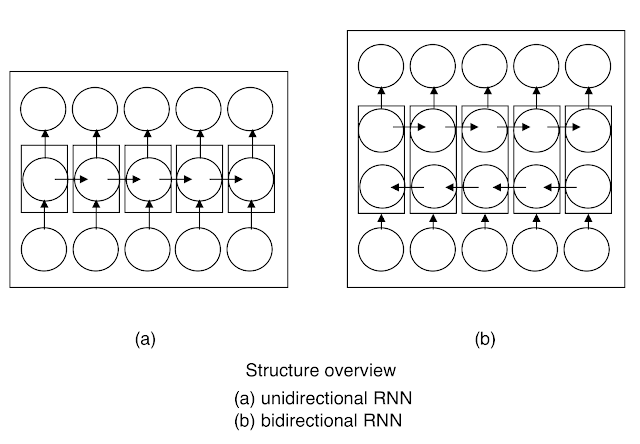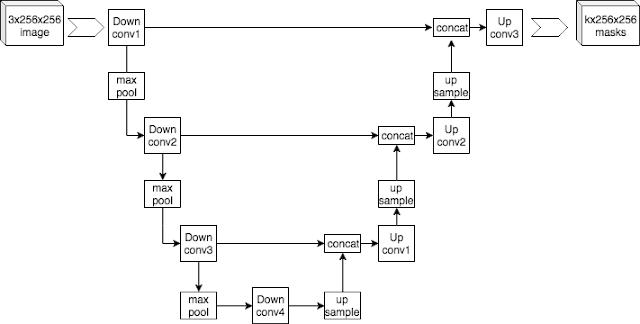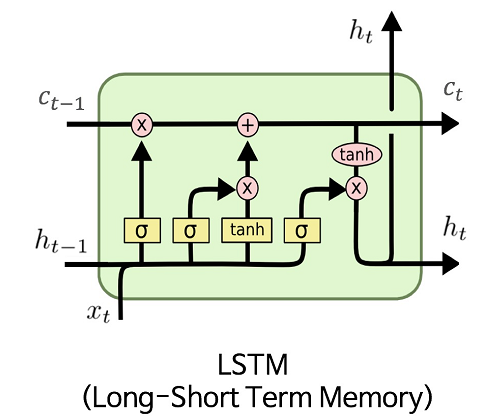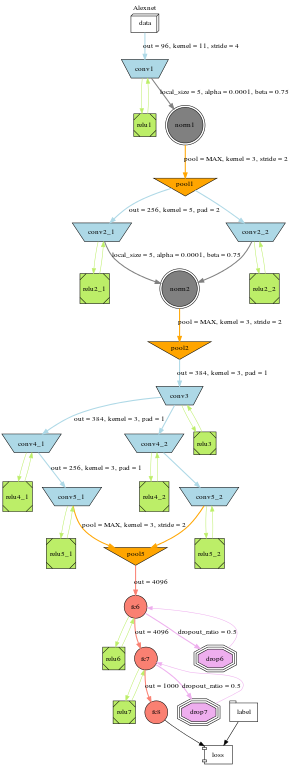In the past decade, the field of Artificial Intelligence (AI) has witnessed significant advancements, largely due to breakthroughs in machine learning and neural network architectures.
This article explored the top ten influential AI models that have shaped the landscape of AI.SYNOPSIS
GPT-3 and BERT have revolutionized natural language processing, with GPT-3 demonstrating exceptional text generation abilities and BERT advancing contextual understanding. ResNet introduced residual connections, enabling the successful training of deep convolutional neural networks and significantly improving image classification accuracy. The Transformer model brought about a paradigm shift in NLP by introducing self-attention mechanisms, serving as the foundation for models like GPT and BERT.
VGGNet's simplicity and depth have made it highly effective in image classification tasks, influencing subsequent developments in CNN architectures. U-Net, specifically designed for biomedical image segmentation, has become a go-to model in medical imaging research. YOLO transformed real-time object detection by predicting bounding boxes directly, finding applications in autonomous driving and surveillance systems.
LSTM addressed the vanishing gradient problem in RNNs, enabling better modeling of sequential data. AlexNet's victory in the ILSVRC marked a turning point for deep learning, showcasing the power of deep CNNs in image classification. GANs introduced a new approach to generative modeling, generating realistic synthetic images and finding applications in image editing and data augmentation.
These influential models have reshaped various AI domains, from language processing and computer vision to biomedical imaging and generative modeling. They have set new benchmarks, inspired further research, and opened up new possibilities for future AI advancements.
Introduction:
Artificial Intelligence (AI) has experienced remarkable progress in recent years, largely driven by breakthroughs in machine learning and neural network architectures. These advancements have given rise to numerous influential models that have revolutionized various domains. In this article, we will delve into the top ten AI models that have significantly shaped the landscape of artificial intelligence, exploring their unique contributions and impact.
Large language models have become increasingly popular in the past few years due to their ability to produce human-like text and create new content without the need for additional training data. OpenAI GPT-3 is a state-of-the-art language model that was released in 2019 by OpenAI and is now the largest open-source language model in existence. GPT-3 can generate human-like text for both writing and spoken dialogue.
GPT-3 is capable of solving problems, understanding conversational context, and is able to generate content that is often indistinguishable from the natural human-written text. OpenAI's Chat GPT Open is another language model based on GPT-3 that is specifically designed for dialogues and communication. Chat GPT Open is capable of understanding, generating, and responding to natural language in both conversation and dialogue.
AI-driven chatbots, like Chat GPT Open, have become increasingly helpful in customer service, sales, and marketing. AI models are also learning how to handle more personal use cases such as providing emotional support, or even learning to detect sarcasm. With large language models, open-source AI libraries, and advancements in AI, future applications of AI in natural language processing will continue to increase.
1. GPT-3 (Generative Pre-trained Transformer 3):
 |
| Photo by ilgmyzin on Unsplash |
GPT-3, developed by OpenAI, stands as one of the most impressive language models to date. Its sheer scale, comprising 175 billion parameters, and its training on vast amounts of diverse data have endowed it with extraordinary text generation capabilities. GPT-3 has demonstrated remarkable proficiency in natural language understanding and generation tasks, showcasing its potential in applications such as chatbots, language translation, and content creation.
2. BERT (Bidirectional Encoder Representations from Transformers):
 |
| "File:Structural diagrams of unidirectional and bidirectional recurrent neural networks.png" by Incfk8 is licensed under CC BY-SA 4.0. |
BERT, an innovation by Google, has played a pivotal role in advancing natural language processing (NLP). By training models on massive amounts of unlabeled text, BERT has deepened the understanding of contextual semantics, achieving state-of-the-art performance on various NLP benchmarks and tasks. It has transformed tasks such as sentiment analysis, question answering, and text classification by considering the context of the entire sentence rather than individual words.
3. ResNet (Residual Neural Network):
ResNet introduced a groundbreaking approach to training deep convolutional neural networks (CNNs). The problem of vanishing gradients was effectively addressed by introducing residual connections, which allowed for the successful training of networks with hundreds of layers. ResNet has become a fundamental architecture for image classification and computer vision tasks, significantly boosting accuracy and enabling the exploration of increasingly complex visual data.
4. Transformer:
 |
| Photo by Google DeepMind on Unsplash |
The Transformer model brought about a paradigm shift in NLP by introducing the concept of self-attention mechanisms. This mechanism allows the model to focus on different parts of the input sequence, effectively capturing long-range dependencies. Transformers have reshaped the way we process and understand natural language, serving as the foundation for models like GPT and BERT. The Transformer architecture has demonstrated remarkable performance in tasks such as machine translation, document summarization, and sentiment analysis.
5. VGGNet (Visual Geometry Group Network):
VGGNet has made substantial contributions to the field of computer vision, especially in image classification. Its key innovation lies in its simplicity and depth. VGGNet consists of multiple convolutional layers stacked on top of each other, followed by fully connected layers. This straightforward architecture, with a fixed structure and small convolutional filters, has proven to be highly effective in accurately classifying images across different domains. VGGNet's impact extends beyond its performance, as it has also influenced subsequent developments in CNN architectures.
6. U-Net:
 |
| "Example architecture of U-Net for producing k 256-by-256 image masks for a 256-by-256 RGB image" by Mehrdad Yazdani is licensed under CC BY-SA 4.0. |
U-Net is a specialized convolutional neural network architecture designed for biomedical image segmentation tasks. Its unique U-shaped architecture, with skip connections between the encoding and decoding paths, enables precise delineation of structures in medical images. U-Net has emerged as a go-to model in medical imaging research and clinical applications, allowing for more accurate and efficient analysis of medical images, such as identifying tumors or segmenting organs.
7. YOLO (You Only Look Once):
YOLO revolutionized real-time object detection by proposing an end-to-end architecture that predicts bounding boxes and class probabilities directly from an input image. Unlike traditional approaches that involve multiple stages, YOLO divides the image into a grid and predicts the objects within each grid cell. This approach significantly improves object detection speed, making it suitable for real-time applications. YOLO has been widely adopted in autonomous driving, surveillance systems, and robotics, empowering machines to understand and interact with the visual world efficiently.
8. LSTM (Long Short-Term Memory):
 |
| "LSTM" by MingxianLin is licensed under CC BY-SA 4.0. |
LSTM, a type of recurrent neural network (RNN), has revolutionized sequential data modeling. It addresses the vanishing gradient problem that affects traditional RNNs and allows for capturing long-term dependencies. With its memory cell and gating mechanisms, LSTM has been successfully applied in various tasks such as speech recognition, machine translation, and sentiment analysis. LSTM's ability to retain and update information over long sequences has significantly improved the performance of models dealing with sequential data.
9. AlexNet:
 |
| "File:Alexnet.svg" by Miquel Perelló Nieto is licensed under CC BY 4.0. |
AlexNet played a pivotal role in popularizing deep learning and CNNs. It made a groundbreaking impact in 2012 when it won the ImageNet Large-Scale Visual Recognition Challenge (ILSVRC). AlexNet's success was mainly attributed to its deep architecture, data augmentation techniques, and innovative use of Rectified Linear Units (ReLU). By demonstrating the power of deep CNNs in image classification, AlexNet paved the way for subsequent advancements in computer vision, inspiring researchers to explore more complex models and larger datasets.
10. GANs (Generative Adversarial Networks):
 |
| "Types of deep generative models" by Cosmia Nebula is licensed under CC BY-SA 4.0. |
GANs have brought about a significant shift in generative modeling. They consist of two components: a generator and a discriminator, engaged in a game-theoretic adversarial training process. GANs have revolutionized image synthesis by generating realistic synthetic images that are nearly indistinguishable from real ones. Beyond image generation, GANs have found applications in image editing, style transfer, and data augmentation. Their innovative approach has opened up new possibilities in unsupervised learning and the understanding of data distributions.
Conclusion:
The past decade has witnessed the emergence of several influential AI models that have propelled the field forward. From language models like GPT-3 and BERT to vision models like ResNet and VGGNet, these models have reshaped the way we process and understand information. Specialized architectures such as U-Net, YOLO, LSTM, AlexNet, and GANs have also made significant contributions to specific domains, enabling advancements in medical imaging, object detection, sequential modeling, and generative modeling. As AI continues to evolve, these influential models will undoubtedly continue to inspire new breakthroughs and drive further innovation in the years to come.


.gif)

.gif)





0 Comments
Please do not enter spam links in the comment box.